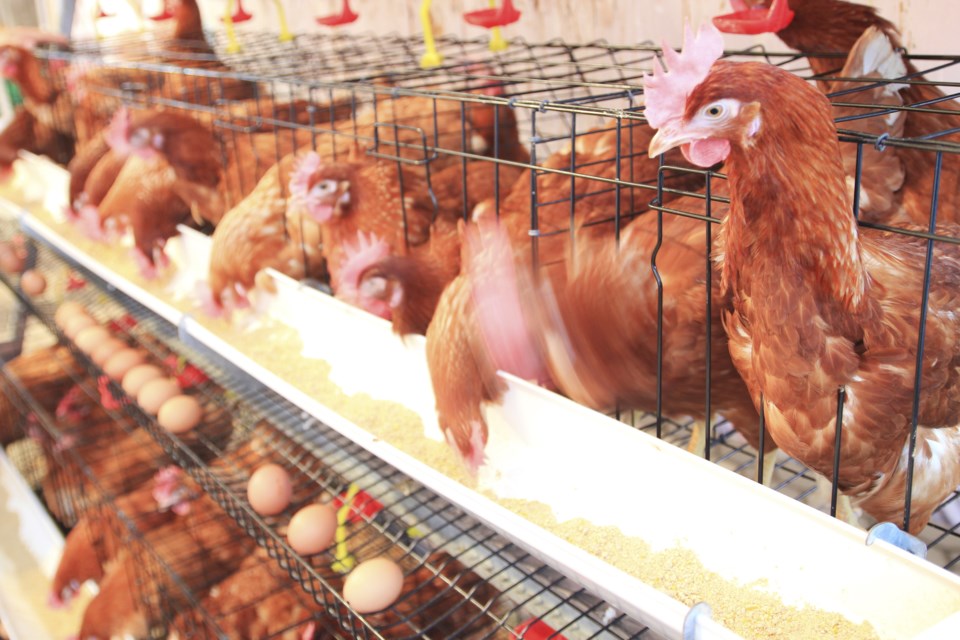The ethical treatment and raising of animals is both an environmental problem as well as a moral one. It is important to educate yourself on where your meat comes from and how it is raised and treated. It is your duty to understand what you are consuming in order to become a responsible meat eater.
Now vegans and vegetarians will argue that we should all withdraw from the consumption of animals altogether, but for some this is neither realistic nor desirable, so education, compassion and responsible choices are key.
Now if we take a look at the factory farming industry, it makes sense as a business model – it strives to maximize output while minimizing costs. Unfortunately, though, it is always at the animals’ expense. Any human capable of empathy would be horrified to see the nightmarish conditions that these animals are usually raised in.
Imagine being confined to a dark cage your whole life, pressed up against other people, being pumped full of chemicals and never knowing what grass felt like or the feel of sunshine on your face – all this leading up to a very violent death right before you make your way to a plate glazed in barbecue sauce.
These animals live their entire lives in fear, a condition which results in natural biological responses that some people believe have a impact on the meat itself.
Another downer to factory farming is the overuse of antibiotics. Antibiotics are used to make animals grow faster and keep them disease-free in unsanitary conditions.
Research shows that factory farms’ widespread use of antibiotics can lead to antibiotic-resistant bacteria that threaten human health leading to antibiotics being ineffective to healing human health ailments. As a result, Health Canada is currently phasing out certain applications of antibiotics in livestock.
Now you don’t have to become a vegan/vegetarian to become a responsible meat consumer, but now that you have a better picture of how animals that are subjected to factory farming are raised for your eating pleasure, you might want to consider making some better choices. After all it’s all about supply and demand.
Here are some labels to look for, that can help you make some healthy, sustainable and cruelty free choices.
Organic vs free-range
When we read labels that say organic, it is referring to the growing and raising standards put forth and instituted by the government. The term “organically raised” refers to what the animal was fed, the avoidance of synthetic chemicals, and the allocating a certain amount of outdoor access. This differs from free-range in the sense that free-range refers to the animal’s access to the outdoors and does not take into account the animal’s diet or medications it has been given.
Health Canada regulations mandate that livestock, including chicken, that are labeled “organic” must be allowed access to pasture. This requirement includes, direct sunlight, fresh air and freedom of movement. The term free-range has become inherently ambiguous because it does not take into account the conditions in which the animal/chickens were raised.
Under the regulatory language, all organic chickens are raised in free-range conditions. However, free-range chicken does not necessarily qualify as an organic food product.
Pasture-raised
When you go to farmer’s market, you will often come across this delightful label, and it is what one wants to see when choosing sustainable meats. But what does it actually mean? Well, pasture-raised refers to the animal being able to roam free in a natural environment where it can eat grasses and forage, just like we picture animals living on a farm in our heads: happy and healthy. In terms of sustainability for the environment, pasture-based animal management saves resources and protects the health of both the consumers and the animals.
Pasture grazing also eliminates the need for farms to produce feed for their animals. And, as far as nutrition goes, pasture-raised meats tend to have higher levels of vitamins and omega-3 fatty acids, making them deliciously nutritionally dense.
Recipe: Roasted parsley,sage, rosemary and thyme chicken
Ingredients:
1 whole chicken, washed & dried
2 tablespoons olive oil
½ cup butter, softened
2 large sprigs fresh rosemary, diced finely
3 sprigs of fresh thyme
2 sprigs of fresh sage
1 sprig of parsley
4 garlic cloves, minced
Sea salt & pepper
Fresh lemon juice (2 lemons)
Cavity stuffing (sliced lemons, sliced onions, whole cloves of garlic)
Instructions:
1. Preheat oven to 425F.
2. Add butter to a medium sized bowl.
3. Add in olive oil,parsley, sage, rosemary and thyme and garlic.
4. Stir to combine. Set aside.
5. Generously season chicken with salt and pepper, including inside of the cavity.
6. Brush the butter mixture onto the chicken generously covering up all of the chicken.(You might need to use your hands for this part)
7. Squeeze the juice of two lemons over the chicken.
8. Stuff the chicken with lemon slices, garlic and onions.
9. Tie together the legs if desired.
10. Place chicken in roasting pan.
11. Cook for 45 minutes and then baste.
12. Return to oven and cook for another 15 minutes or until golden. Lightly tent with foil if chicken is browning too quickly.
13. Let chicken cool before carving.
14. Serve with roasted veggies, potatoes and fresh summer salad!



